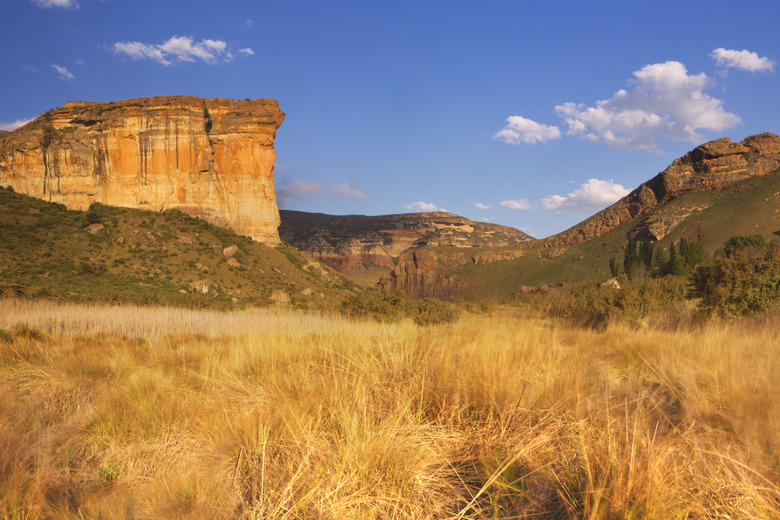Types Of Grassland Ecosystems
A grassland consists of large rolling fields of grasses, flowers and herbs. Grasslands ecosystems emerge due to low levels of sporadic precipitation that is only substantial enough to support smaller plants. Grass survives in these arid conditions because of its deep and highly elaborate root system that enables it to access moisture hidden deep in the soil. There are two main types of grasslands — tropical and temperate — with several subcategories within each type.
Tropical Grasslands
Tropical Grasslands
Tropical grasslands are warm all year round with established rainy and dry seasons. During the rainy season, tropical grasslands receive between 50 and 130 centimeters of rain. Most notable of the tropical grasslands is the African savanna, which has an occasional tree and is home to many of the world's most spectacular species, such as:
- elephants
- giraffes
- lions
- zebras
Savanna grass is usually quite short, making for excellent grazing and hunting grounds.
Temperate Grasslands
Temperate Grasslands
Temperate grasslands also have two seasons, growing and dormant. During the dormant season, no grass or crops grow because it's too cold. These grasslands make for excellent farming because of their deep and nutrient-rich soils. Temperate grasslands receive between 25 and 75 centimeters of rain a year. The most notable temperate grasslands are the North American prairies, which are home to a wide variety of wildlife, including pronghorn antelope, mice, jack rabbits, foxes, snakes and coyotes. Grass here can grow quite tall, reaching up to seven meters in height. Trees are restricted to where there is a large concentration of water such as a river or lake. Because of their deep rich soil, more than half of temperate prairie grasslands have been converted to farmland that provides a large chunk of the world's food.
Other Notable Grasslands
Other Notable Grasslands
It's important to remember that grass can thrive in wide range of climates. In fact, grasslands make up over a quarter of the Earth's land. Other notable grassland ecosystems are flooded grasslands, polar or tundra grasslands, montane grasslands and xeric or desert grasslands. Flood grasslands are flooded seasonally or year round. These grasslands occur mostly in subtropical and tropical climates. The most notable flood grassland is Florida's Everglades. Polar or tundra grasslands occur in high to subarctic regions. These grasslands consist mainly of shrubs and have a very short growing season. Montane grasslands are high-altitude grasslands located on high mountain ranges and valleys. A notable example of montane grasslands is the paramo of the Andes. Xeric or desert grasslands are very sparse grasslands located in and on the outskirts of deserts. Grass here is highly resistant to disease and drought.
Cite This Article
MLA
Malysa, Sebastian. "Types Of Grassland Ecosystems" sciencing.com, https://www.sciencing.com/types-grassland-ecosystems-7454333/. 23 April 2018.
APA
Malysa, Sebastian. (2018, April 23). Types Of Grassland Ecosystems. sciencing.com. Retrieved from https://www.sciencing.com/types-grassland-ecosystems-7454333/
Chicago
Malysa, Sebastian. Types Of Grassland Ecosystems last modified August 30, 2022. https://www.sciencing.com/types-grassland-ecosystems-7454333/
